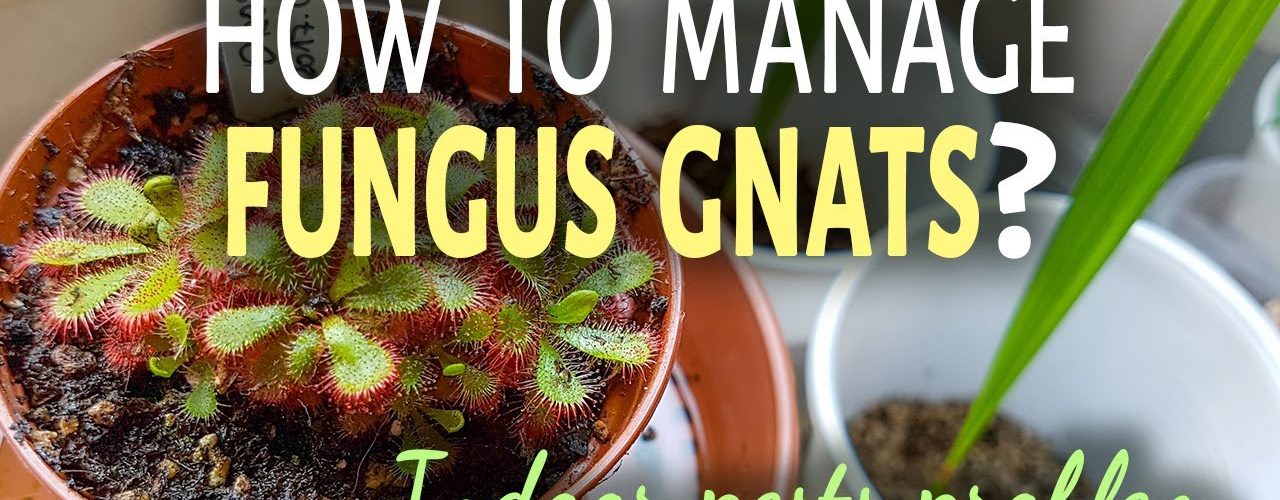Fungus gnats are tiny gray or gray-black flies. They cannot fly very far and typically stay near the soil or leaves of potted plants. Fungus gnats are mostly just an annoyance unless you have a sick plant. They can spread the disease of the sick plant to any other healthy plants. The larvae of fungus gnats feed on the roots of your plants, which can be very damaging to the afflicted plant. Fungus gnats breed in plant soil and eggs are typically laid in the top layer of soil.
Although an adult female typically lives only a week, 100 to 150 eggs can be laid during this time. With this rapid of a rate of reproduction, and the potential damage to your plants, an epidemic is in the making! Luckily, an infestation of fungus gnats can be solved fairly easily.
The first issue to look at is whether or not you are over-watering your plants. Fungus gnats thrive in soil that is overwatered, especially in warmer temperatures. Often the very top layer of soil around a plant will be dry but if you push your finger down into the surface of the soil, the soil will be moist right below. This plant does not to be watered. This can also be verified by checking the condition of your plant. Yellowed, soft leaves that fall off the plant mean the soil is too moist. Dry, brown leaves mean the soil is not moist enough.
If you have recently purchased a new plant and then noticed the issue, the new plant may have had soil that was the original source of the issue. Whenever you are shopping for plants, be sure to check that plant and plants around it for gnats before purchasing the plant. If you notice gnats, head somewhere else to shop for a plant.
At many home improvement stores, gardening stores, or online, you can purchase yellow stick cards. Flies have been shown to be attracted to the color yellow. The cards are coated on both sides with an adhesive that will trap the gnats. These cards come with a metal stick and should be placed on the stick in the plant’s soil to attract the most gnats. The cards can be changed as often as needed.
The same retailers also sell a liquid fly trap; these are marketing for flies but are useful in killing gnats too. You can also try filling a shallow bowl or plate with upturned edges with any type of vinegar. Gnats are attracted to vinegar and will fly in and become trapped. Since fungus gnats do not fly long distances, the vinegar should be located near the plants. If you have pets or kids, you will not want to leave vinegar out where it can be easily reached and possibly ingested.
These methods can take care of existing and adult fungus gnats but will not kill the eggs. Many retailers sell products containing pesticides or natural bacteria such as bacillus thuringiensis. The solution is mixed with water and used in the soil. Ask for a recommendation on which product has been shown to work well. This should be tried in conjunction with the methods above, as it will take time to work effectively in the soil.
To test which of your plants have larvae, you can try cutting a potato into chucks and leaving it in the soil. Leave the potatoes for 2-3 days and then pick up the pieces and inspect them. You can see if the larvae have been feeding. If they have, this is a plant that will need to have the soil treated to prevent any future outbreaks of fungus gnats.
Related Posts
- How To Kill Gnats In Your House?
- How To Get Rid Of Gnats In Houseplants?
- How To Get Rid Of Gnats In the Kitchen?
- How To Kill Fungus Gnats?
<>



